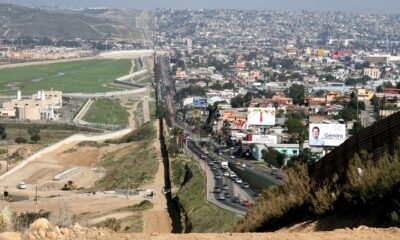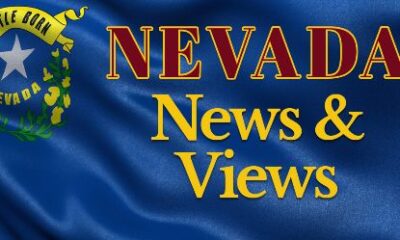(Sean Whaley/Nevada News Bureau) – A bill that would charge most Nevada drivers a fee to subsidize a low-cost auto insurance pilot program for eligible residents of Clark County ran into some rough questioning today at a Senate hearing.
The bill, sought by Assemblyman Kelvin Atkinson, D-North Las Vegas, was the subject of some serious vote trading to get the two-thirds support required to move it out of the Assembly last month.
The bill required a two-thirds vote because it would impose a 50-cent fee per insured vehicle per year to establish a lower-cost auto insurance policy for low-income Clark County residents who are having trouble paying for a regular policy.
In testifying for Assembly Bill 299 in the Senate Commerce, Labor and Energy Committee, Atkinson said the intent of the program is to provide a way to reduce the number of uninsured drivers in Nevada, a number put at 19 percent by the Nevada Sage Commission in a 2010 report.
“I’ve heard first hand that too many low-income drivers remain uninsured because the cost of standard insurance premiums are beyond their financial reach,” he said. “Walking my district this past summer, my constituents told me that they are having a difficult time paying for insurance even when they are great drivers with no driving convictions on their records.”
Atkinson said his proposal is modeled on a similar program in California that has extended auto coverage to thousands of motorists.
The program, which would be administered by the Nevada Division of Insurance, would lower the cost of an insurance premium by about $184 a year, he said.
There are a number of requirements individuals would have to meet to be eligible for the program, including having good driving records as defined in the bill, Atkinson said.
But Sen. Michael Roberson, R-Las Vegas, said the bill would create a process of wealth distribution, which he would oppose. The eligibility criteria for the low-cost insurance at 250 percent of federal poverty guidelines also suggests that huge numbers of Clark County residents could participate, he said.
“To say you can’t afford car insurance, and that everyone else should pay so you don’t have to, I mean what we’re talking about is wealth redistribution,” Roberson said. “Maybe some are OK with that but I’m not.”
Jim DeGraffenreid, representing the Nevada Republican Party, said the California program the proposal is modeled after has not been successful. The California program insured fewer than 50,000 drivers out of an estimated 3.5 million uninsured drivers, he said.
DeGraffenreid also said it would cost $800,000 to expand the bureaucracy of the Division of Insurance to administer the program, a figure Atkinson said was not correct.
DeGraffenreid’s comments prompted Roberson to ask why Nevada would want to emulate a failed California program.
Joe Guild, a lobbyist representing the State Farm Insurance Co., said the company estimates the policy would save only about $50 a year. Because the low-cost policy would provide only $3,000 worth of property damage coverage instead of the $10,000 provided for in regular policies, it could also cost the low-cost participants more out-of-pocket if there was an accident, he said.
Guild said State Farm is not opposed to the proposal, however.
The National Association of Mutual Insurance Companies (NAMIC) submitted a letter in opposition to the bill, saying the program “is unlikely to do anything other than create a new state bureaucracy for taxpayers and insurance consumers to fund.”
The letter went on to ask, “. . . when one considers the very low participation rate in the California Low Cost Auto Program, one needs to question why Nevada taxpayers and insurance consumers should be assess a 50 cents per passenger vehicle fee to fund a program that hasn’t been even remotely successful in a neighboring state?”
A number of other individuals testified in opposition as well.
The bill did see some support from Jan Gilbert, representing the Progressive Leadership Alliance of Nevada, who said the pilot program should be given a chance. The savings, while modest to some, could help families who are finding it tough to make ends meet, she said.
After listening to the opposition testimony, Atkinson said he was surprised by the comments. None of the people testifying against the bill made an appearance when it was heard in the Assembly, he said.
Drivers will pay for those who choose to drive without insurance one way or another, and the low-cost program is the better alternative, Atkinson said.
The committee took no immediate action on the bill.




Facebook
Twitter
Pinterest
RSS